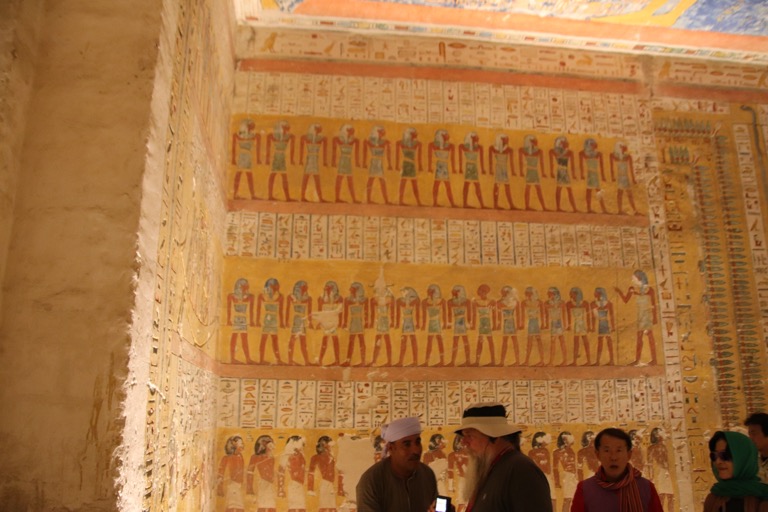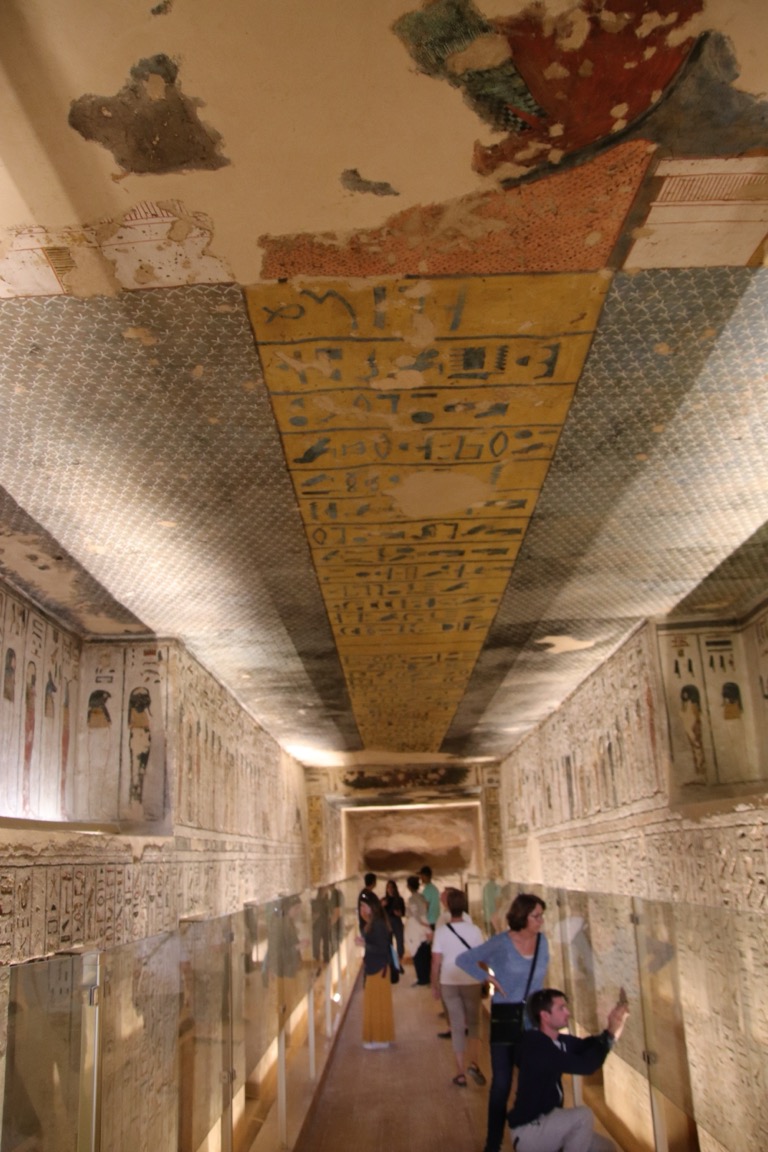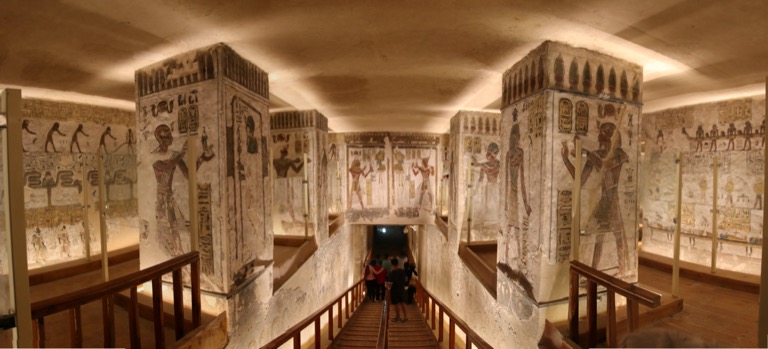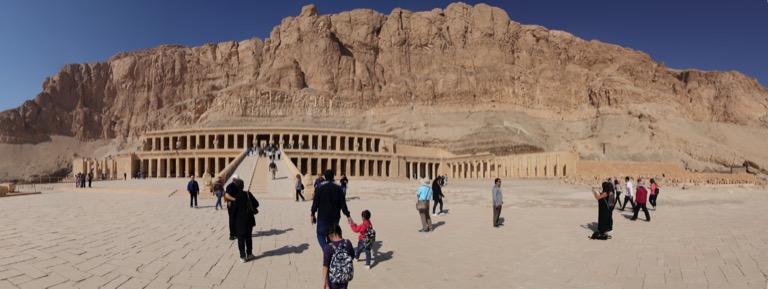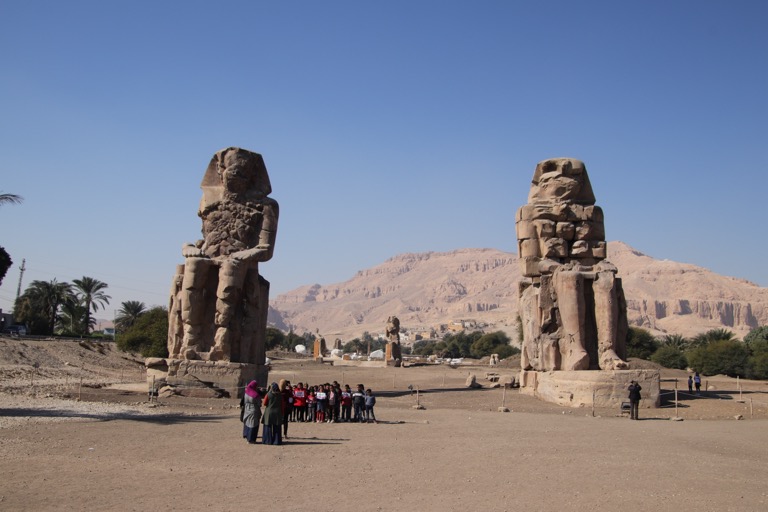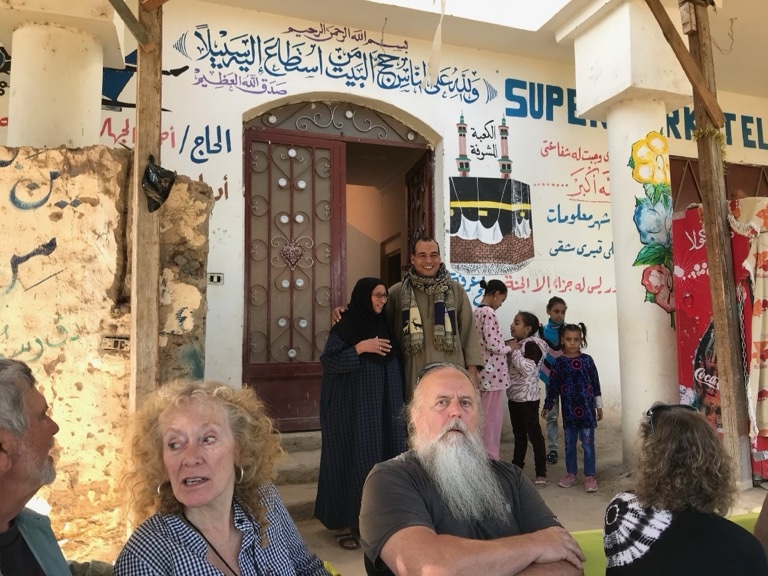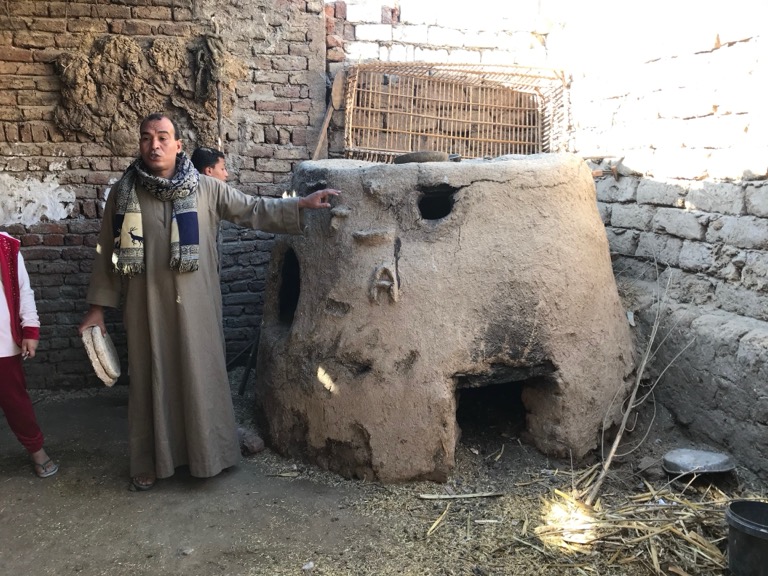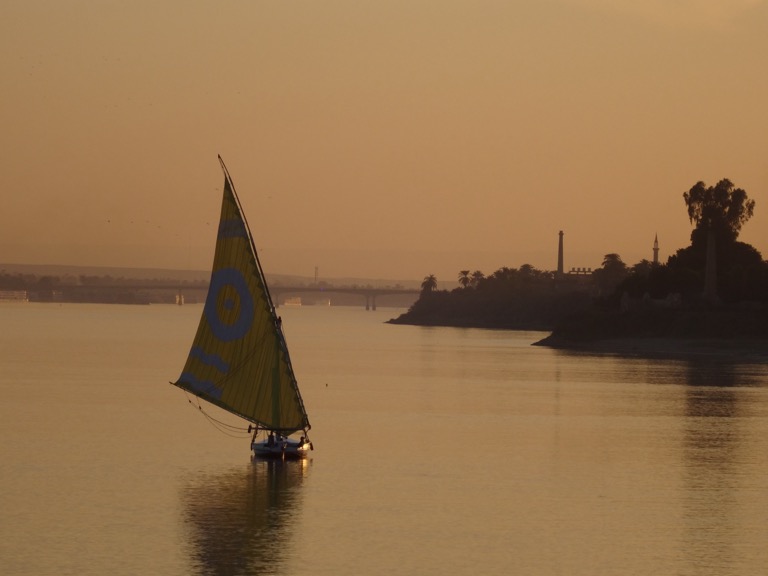on
Valley of the Kings
We went to the Valley of the Kings today. This is where many New Kingdom Pharaohs are buried. We saw four tombs, Ramses IV, Tutankhamen, Merenptah and Ramses III.
When you visit the Valley of the Kings, the ticket allows you into three tombs, except for the special tombs that have a separate ticket just for them.
Ramses’ IV tomb is quite popular and not that large. The passageway down to the burial chamber was richly decorated. We got lucky on the way back out and there were not too many people going in or out at that time.
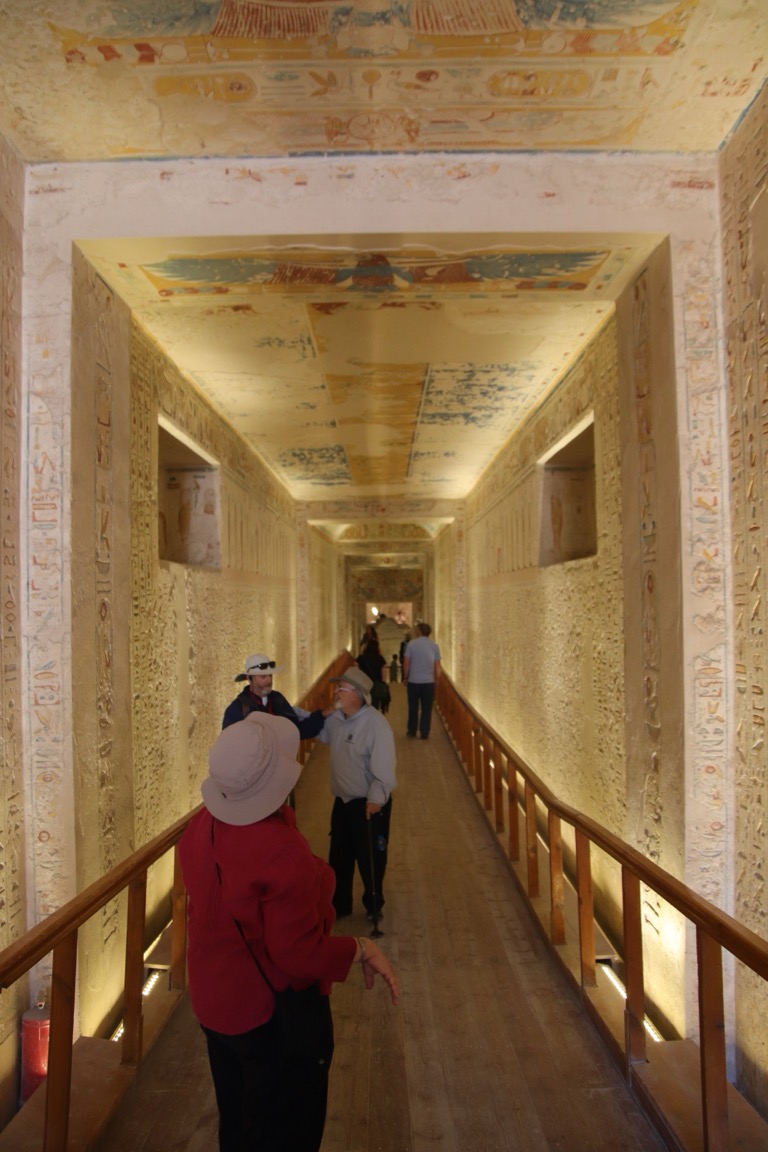
There isn’t a lot of room in the burial chamber itself. That makes it hard to take a picture without a fish-eye lens. This is just one corner of the tomb.
Tutankhamen’s tomb is one of the special tombs that requires an extra ticket. His tomb is rather small compared to the others we entered, and not very richly decorated. The actual burial chamber was behind a false wall that was decorated, but was removed to get at his mummy (and the gilded cases that surrounded it)
Meranptah’s tomb and burial chamber is much larger, though not as richly decorated.
An Annex is a room along the pathway to the burial chamber.
Ramses’ III tomb is richly decorated.
Then on to Hatschepsut’s Temple, which is just over the ridge on the south side of the Valley of the Kings. She was the only woman to rule Egypt as a king. She ruled as regent for her son for 22 years, and had quite a building program.
Then a quick stop at the Colossi of Memnon.
We had lunch with at a farmer’s house. He has four acres of land that is irrigated. He lives with his mother, his wife and family and his four brothers and their families. They are able to raise crops year round, growing most of their own food. They do most of the farm work by hand. When they want to plow two acres to plant sugar cane, they will hire a tractor and plow.
He told us the story of how his mother wanted to visit Mecca, and he was able to raise the money to take her a number of years ago. Notice the black cube painted on the house behind him. That signifies that someone there has done the Hajj. A few years later a group of farmers asked him to take their mothers on the Hajj since he had done it once before. So he’s been twice.
They do raise wheat and sell it to the local mill, getting flour in return. That is used to bake all their bread in this mud and straw oven. The bread they served was a sourdough and was quite good.
Our guide later said that irrigated farmland sells for around $400,000 US dollars per acre. When the King was deposed in the 1950s, every farmer was given four acres. So this has been handed down at least one generation by now.
They also have chickens, ducks and one ox.
